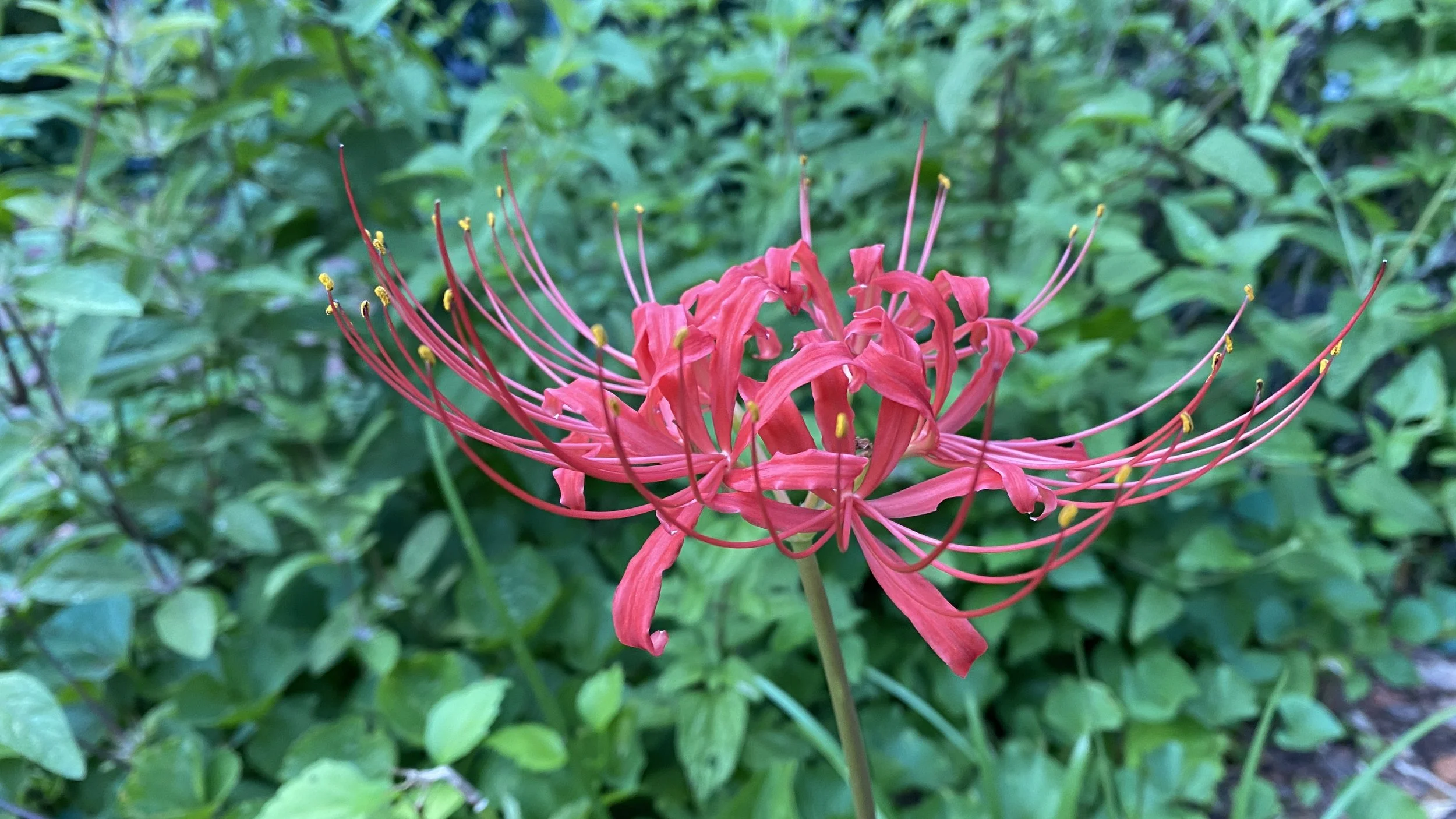~ From August to September ~
In this segment, we’ll take a look at the last four lycoris to bloom in Elizabeth Lawrence’s garden, those that span August to the end of September.
Our journey continues with L. sprengeri, sometimes known as the “electric blue spider lily.” I don’t think that moniker is particularly accurate as the blooms are only touched with blue. (It is unfortunate that marketing departments seem to think everything needs to sound extreme… if one bought an “electric blue” spider lily, and what came up was hardly electric blue, one might be turned off of all lycoris. But I guess there would be more for the rest of us to grow then, right?) I should not be so critical of the common name because the flowers of this lycoris are distinct and beautiful. And, yes, there is a hint of (not so electric) blue. L. sprengeri usually flowers early in August. Its stalks are 14-16” tall, topped with blooms that look like a color saturated version of L. squamigera.
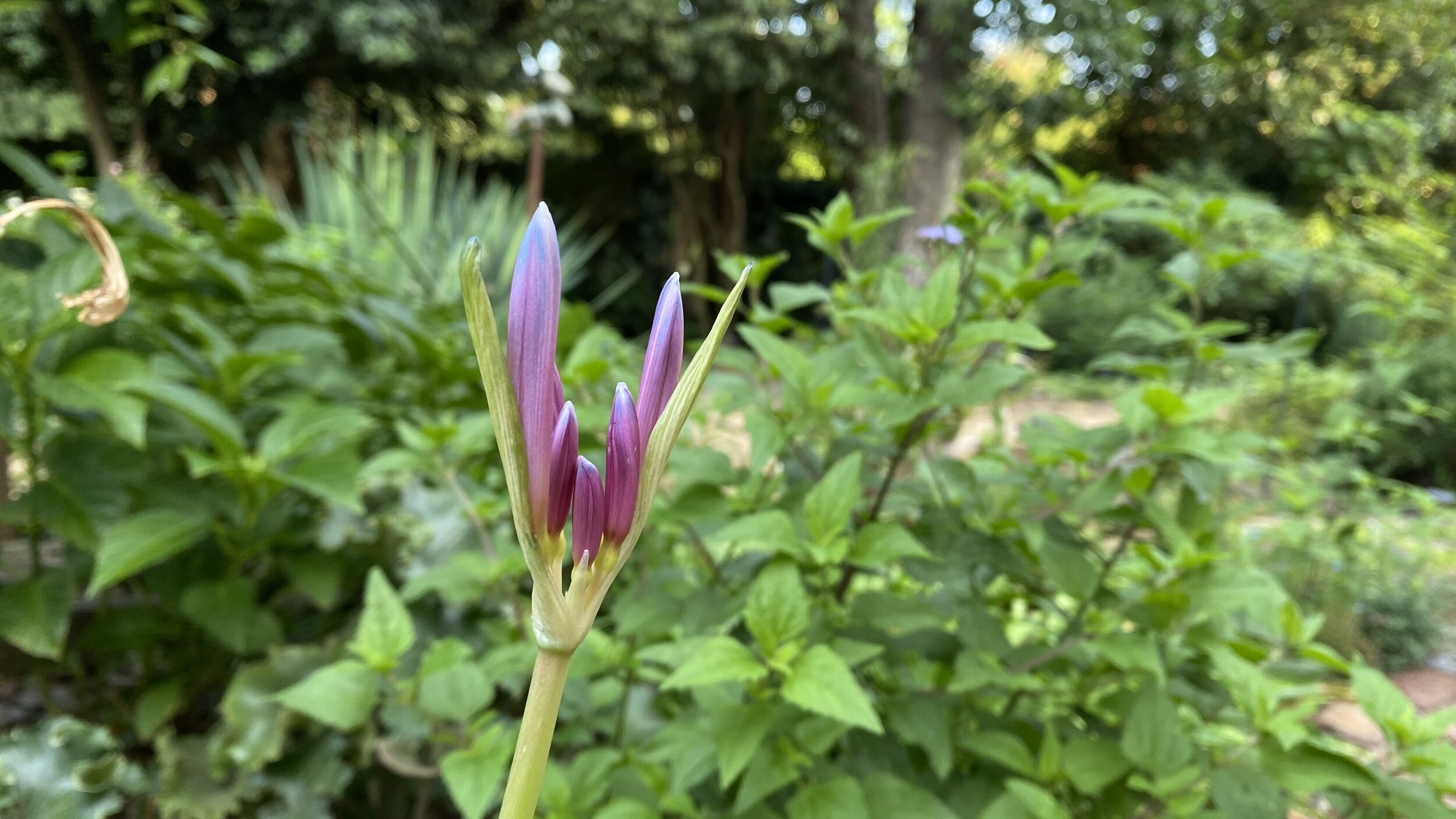
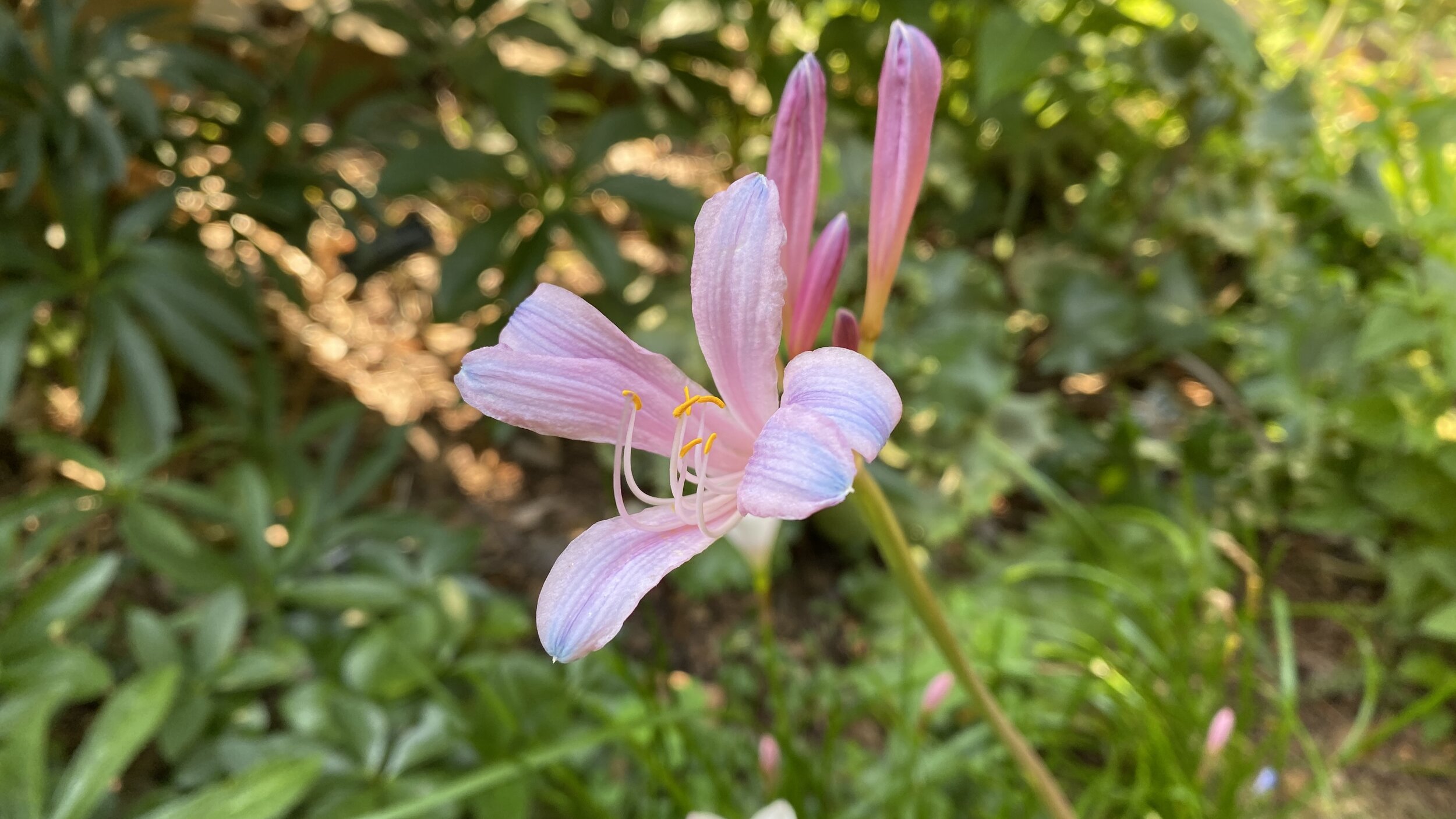
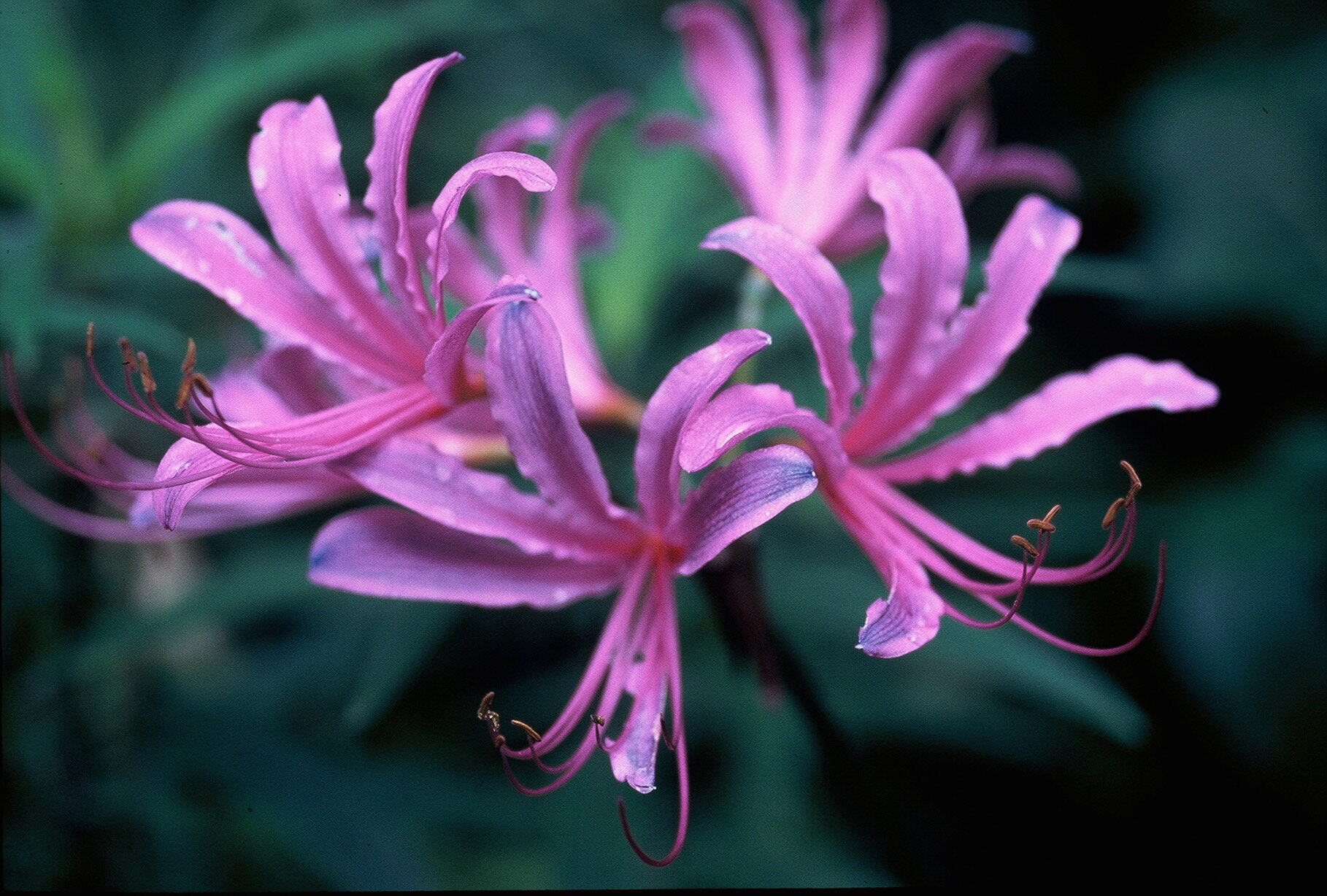
Blooming a week or two after L. sprengeri is L. caldwellii, or what I like to call blooms of buttery deliciousness. L. caldwellii, or pale yellow surprise lily, is a bit taller (20-24”) with blooms a little larger. In bud, it has a peach tone to it, but once open, it’s like buttah. L. caldwellii is perhaps my favorite as it seems to be very easy in cultivation (it even grows for me in my home garden), and has never been temperamental of bloom, and it glows in the garden.
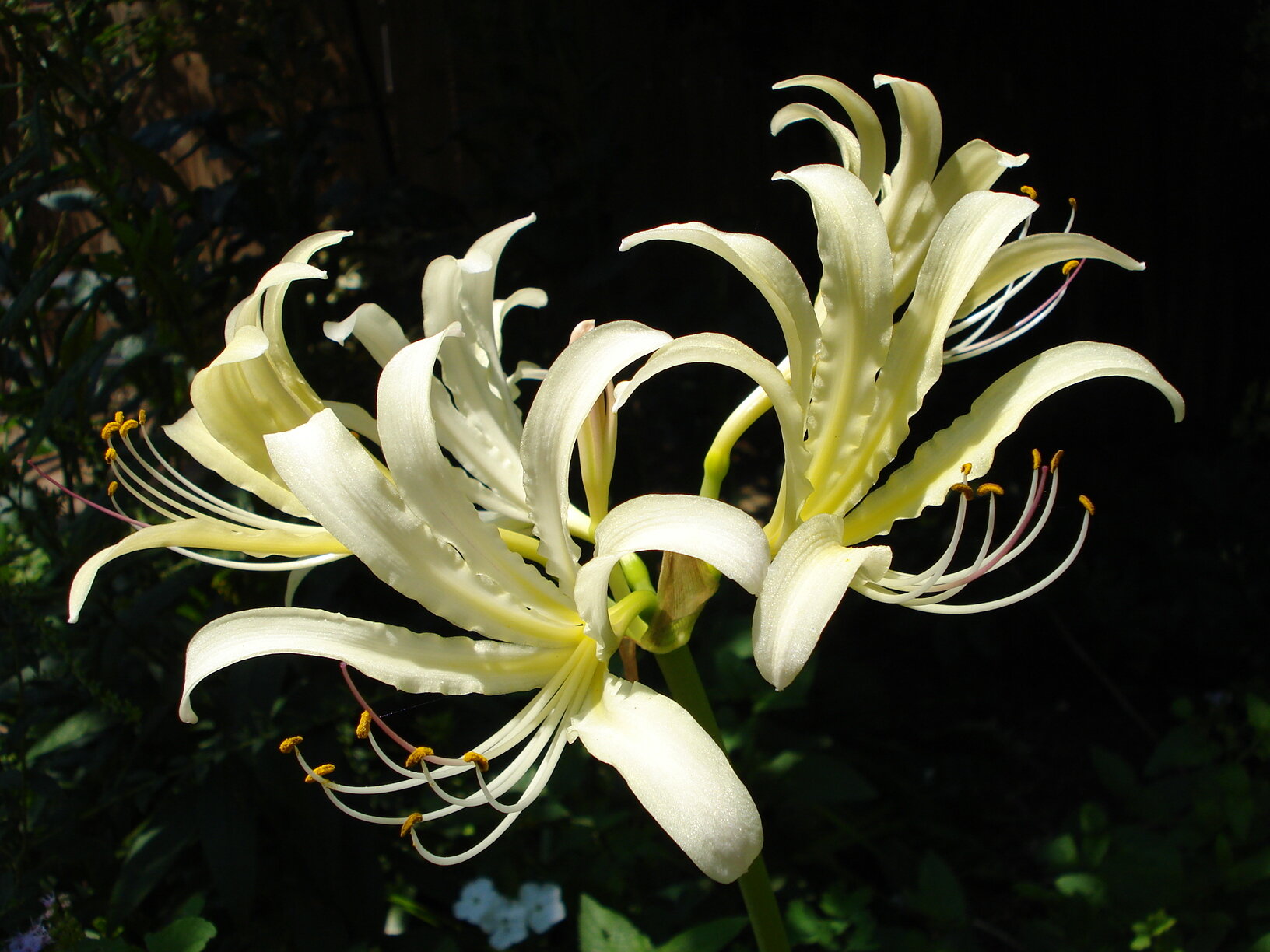
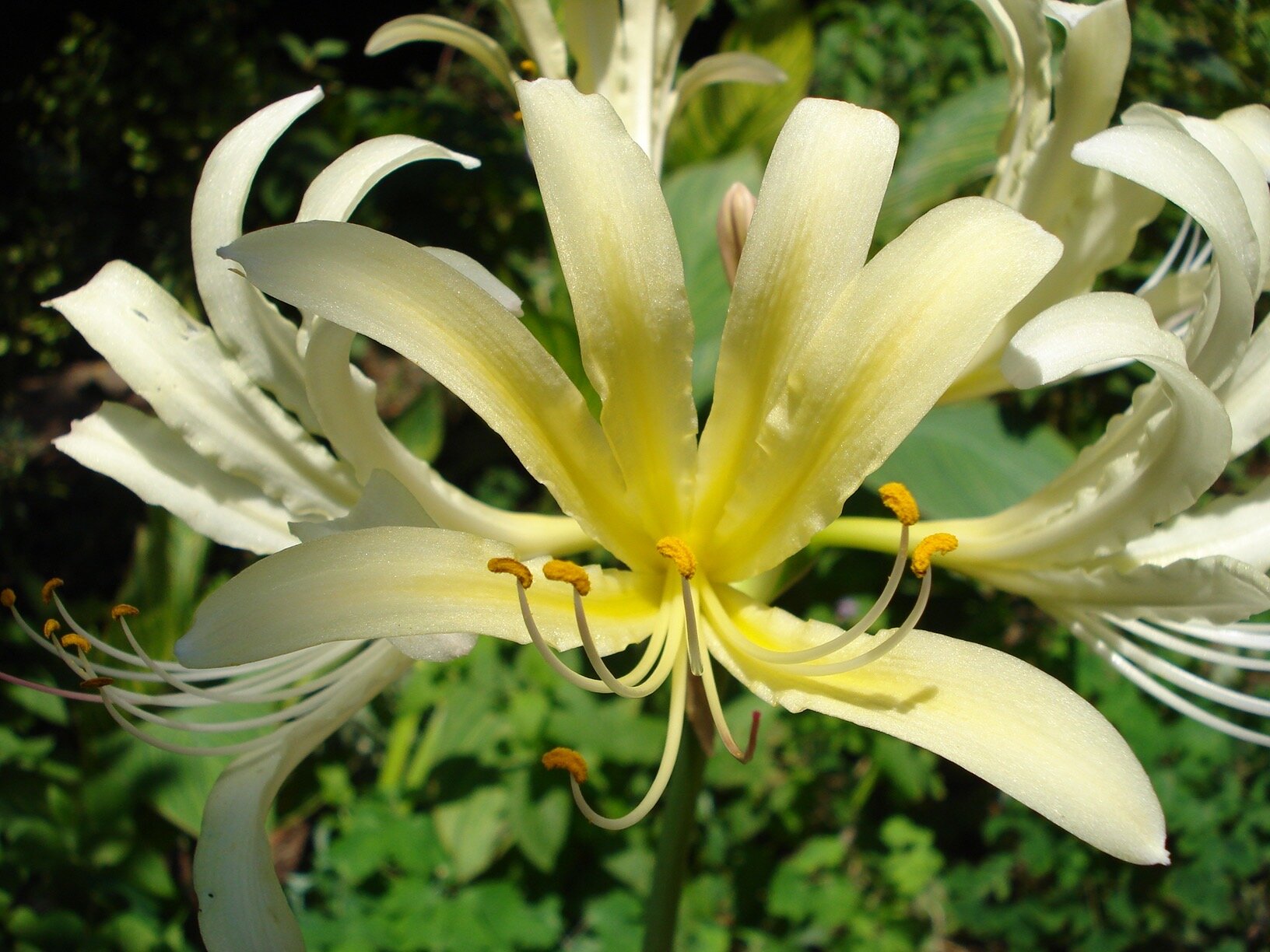
In "Lovely Lycoris, the Bewitching Bulbs, Part 1,” I mentioned Elizabeth’s Lycoris albiflora. These make the best show throughout the garden. Previous owner and savior of the Elizabeth Lawrence House & Garden, Lindie Wilson, makes a point to come by at least a few times from late August through mid-September to see what she enviously refers to as the “disgusting display,” even though her own garden is filled with more magnificently blooming clumps of many different types of lycoris.

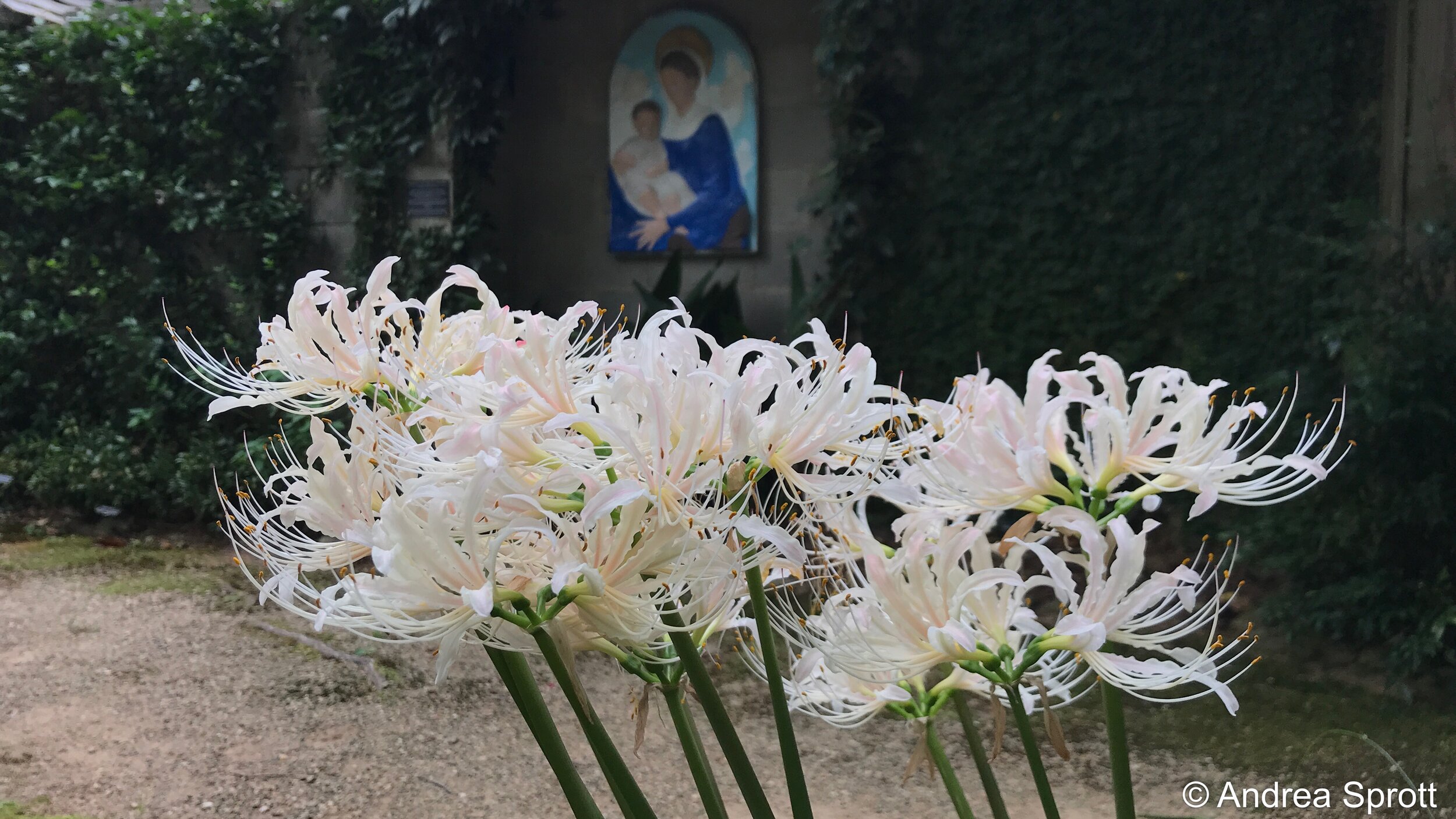

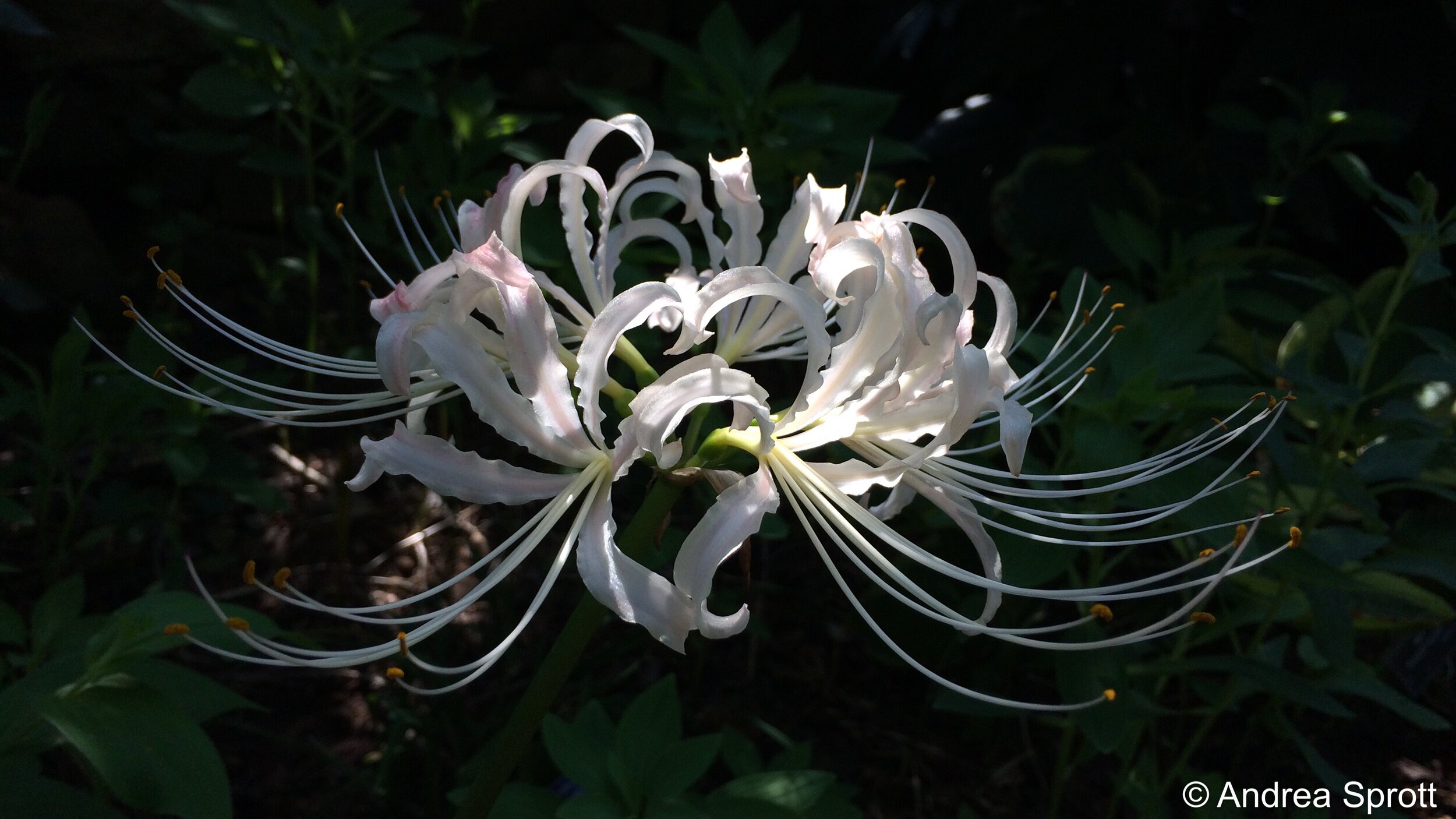
In her October 4, 1959 article for the Charlotte Observer, “Beautiful Blooms; Season of Amaryllis Has Been Wonderful,” Elizabeth wrote of L. albiflora:
“The cream-colored flowers are tinged with peach when they first come out. Caroline Dormon, who has had this for years, says that it is as prolific and indispensable as the old red spider lily, L. radiata. My experience is that L. albiflora takes a long time to become established. Once settled it blooms freely, and as long as it blooms well, the clumps had better be left alone.”
For me, three years was how long it took L. albiflora to become established, which did not seem very long at all.

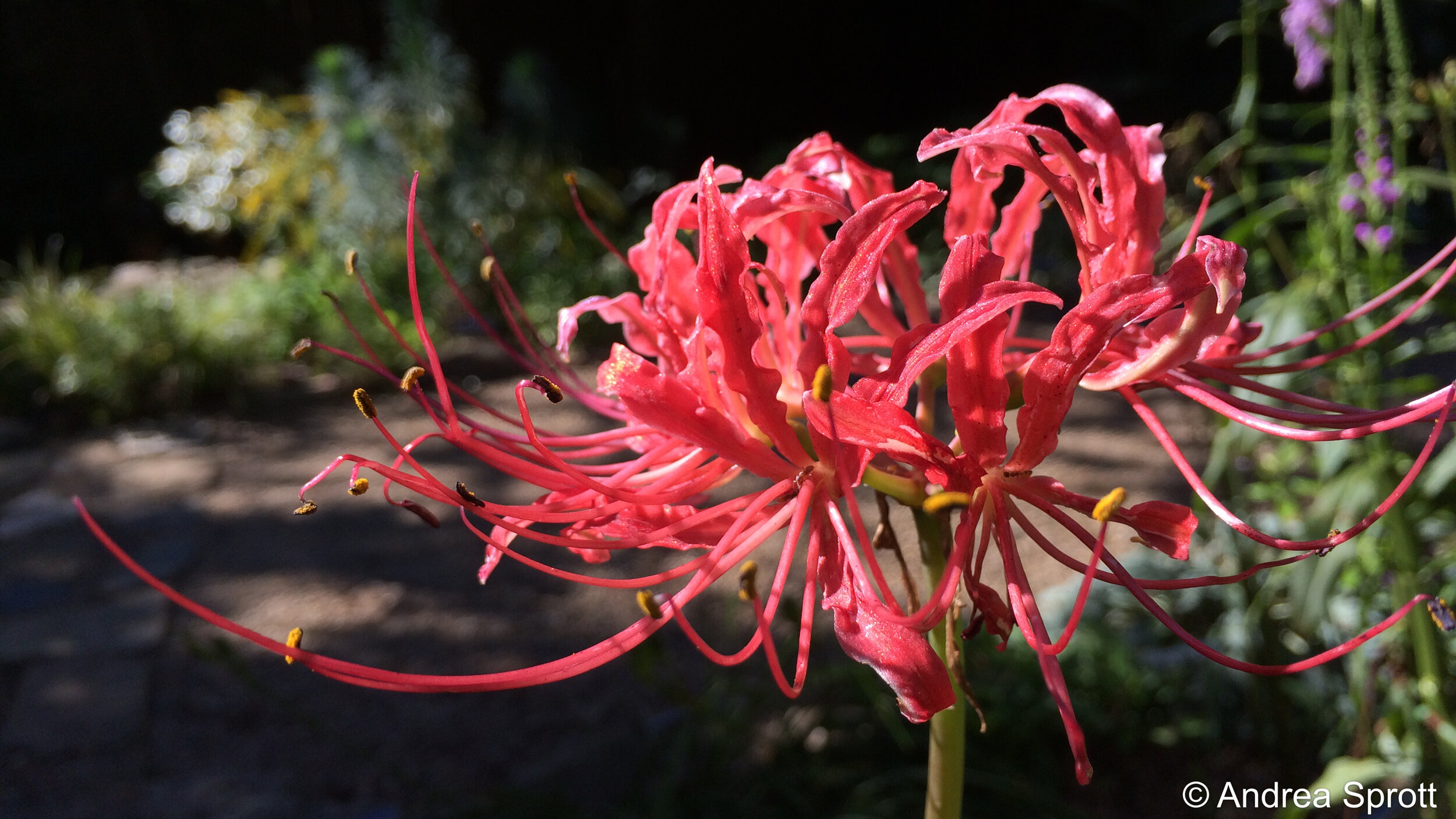
“They are most beautiful planted to themselves, and there cannot be too many of them. The quick color that flares up as suddenly as a flame burns out almost as soon. After scarcely more than two weeks they are gone.”
Nearly 80 years ago, Elizabeth Lawrence wrote that in A Southern Garden of Lycoris radiata (red spider lily). Her description of their brief bloom still strikes me every time I read it. They do seem to “flare up” and burn out so quickly… scarcely the last two weeks of September.
A few years ago, I saw a field of these in bloom in the backyard of a house in Old Salem. That is the way to plant them—by the hundreds—so it is more like a bonfire than a match.
That wraps up the season of lycoris bloom in Elizabeth Lawrence’s garden. I will leave you with some notes on cultivation.
In his article “Lycoris,” published in the American Horticultural Society’s journal, The National Horticultural Magazine, October 1957, Frederic P. Lee has this to say:
“Lycoris bulbs should be planted shallow, just below the surface of the soil, in light shade with leaf mold or humus. Commonly, they may not bloom the first year after planting. In general, they bloom irregularly in that all bulbs in a planting of any one kind are not likely to bloom regularly each year. Most Lycoris bulbs increase readily.”
Happy lycoris planting! Come see them in Elizabeth’s garden and/or read about them in her writings. Let me know if you get smitten with these bewitching bulbs, too. My guess is that it’s inevitable.

